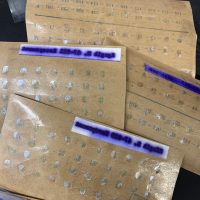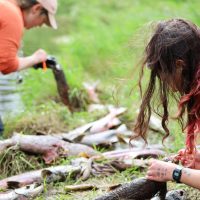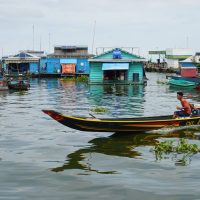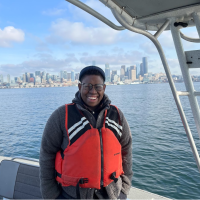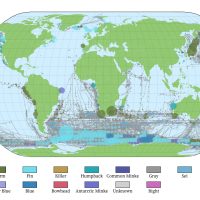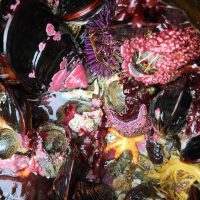Filter Results
Salmon, scales, and spectrometry: analyzing historical fish scales to explore food web changes over time
For over 60 years, the Alaska Department of Fish and Game have collected scales from sockeye salmon in Bristol Bay. Now, these scales are receiving special treatment in a new project led by SAFS graduate student Grace Henry, who is conducting stable isotope analysis to examine how food webs in the North Pacific Ocean have changed since the 1960s.
Chemistry has always been Grace’s biggest interest: “I love chemistry, and for me, it’s the cornerstone of ecological science.” Working with stable isotopes in her pre-graduate studies, Grace wanted to use this method during her thesis work on food webs using historical archived samples.
Part 2 of our video series featuring the Alaska Salmon Program now live
Watch Part 2 of a summer with the Alaska Salmon Program, now live, featuring the students who are essential to the program.
Read moreStudying toxic metals in fish in southeast Asia’s largest freshwater lake
In the largest freshwater lake in southeast Asia, Shorna Sabikunnahar is looking into the ecological and environmental drivers of toxic metals in resident fish.
Conducting her research on Tonle Sap Lake in Cambodia, which is part of the Mekong River system, Shorna is a SAFS PhD student in the Holtgrieve Ecosystem Ecology Lab (HEEL). Designated as a Biosphere Reserve by UNESCO, Tonle Sap Lake is one of the most diverse and productive ecosystems on the globe.
Multiple lines and levels of evidence for avian zoochory promoting fish colonization of artificial lakes
Understanding how obligate freshwater organisms colonize seemingly isolated ecosystems has long fascinated ecologists, with new research co-authored by Flavien Garcia and Julian Olden demonstrating possible bird-mediated colonization of lakes by European perch.
Read moreDiving deep into how fish impact carbon cycling in the ocean
Recently featured in Hakai Magazine’s article “All The Fish We Cannot See”, SAFS PhD student Helena McMonagle is conducting a deep dive into a hidden cache of fish that might play an unexpected role in how the ocean sequesters carbon. We caught up with Helena to find out more about it.
Since starting this research in 2019, I’ve been using data collected at sea and in the lab, along with bioenergetic models, to estimate how much carbon these mesopelagic fish, such as lanternfish, transport from surface waters into the twilight zone.
Working with the Port of Seattle during a Washington Sea Grant Fellowship
Selected as the 2022–2023 Washington Sea Grant Keystone Fellow, Ashley Townes spent a year working with the Port of Seattle’s maritime habitat team on advancing the development and implementation of innovative habitat restoration projects including kelp research, fish sampling with underwater remote operated vehicles (ROVs) and 360-degree cameras, and bankline monitoring to survey the condition and character of shorelines at port facilities in the Lake Washington Ship Canal, Shilshole Bay, Elliott Bay, the East and West waterways and the Duwamish Waterway.
Read moreSupporting Tribal-led salmon monitoring using computer vision
UW researchers are developing a drone-based salmon survey method that the Sauk-Suiattle can use to manage resources.
Read moreWhaleVis turns more than a century of whaling data into an interactive map
A team at UW, including Trevor Branch from SAFS and Zoe Rand from QERM, have created an online interactive map called WhaleVis, which lets whale researchers visualize the IWC’s data on global whale catches and whaling routes. From this, researchers can estimate the animals’ spatial distribution and the effort whalers put into hunts.
Read moreSAFS Graduate Student Symposium Program now live!
From corals, birds and salmon to microplastics, otolith microchemistry and fisheries management, join us for a day full of grad research from around the world.
Read moreIntegrating mathematics with fishery science: another year of the Varanasi Internship
Now running for over a decade, the Varanasi Quantitative Undergraduate Summer Internship Program brings together math and fisheries sciences in a unique experience for students, who spend a summer working on research projects at NOAA Northwest Fisheries Science Center (NWFSC).
A collaborative program jointly funded by NOAA Fisheries, SAFS and the UW Department of Mathematics, and endowed by Usha and S.
